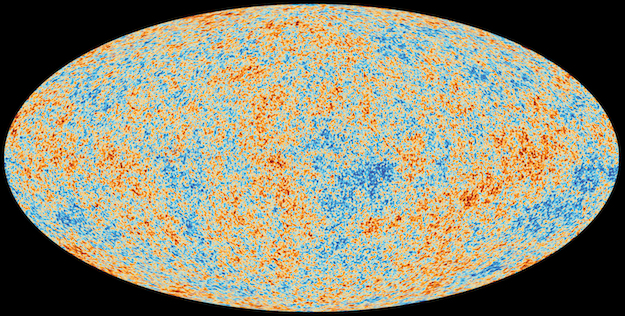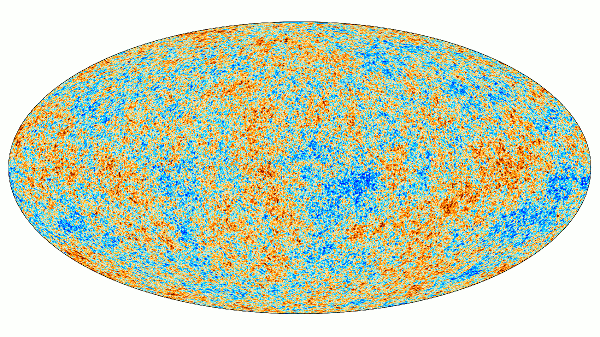ESA | Space Science | Science & Technology | Planck | 2018 Jul 17
The Planck consortium has made their final data release, including new processing of the cosmic microwave background temperature and polarisation data. This legacy dataset confirms the model of an 'almost perfect Universe', with some remaining oddities giving researchers some intriguing details to puzzle over.
It was 21 March 2013. The world's scientific press had either gathered in ESA's Paris headquarters or logged in online, along with a multitude of scientists around the globe, to witness the moment when ESA's Planck mission revealed its ‘image’ of the cosmos. This image was taken not with visible light but with microwaves.
Whereas light that our eyes can see is composed of small wavelengths – less than a thousandth of a millimetre in length – the radiation that Planck was detecting spanned longer wavelengths, from a few tenths of a millimetre to a few millimetres. Most importantly, it had been generated at very beginning of the Universe.
Collectively, this radiation is known as the cosmic microwave background, or CMB. By measuring its tiny differences across the sky, Planck's image had the ability to tell us about the age, expansion, history, and contents of the Universe. It was nothing less than the cosmic blueprint.
Astronomers knew what they were hoping to see. Two NASA missions, COBE in the early 1990s and WMAP in the following decade, had already performed an analogous set of sky surveys that resulted in similar images. But those images did not have the precision and sharpness of Planck.
The new view would show the imprint of the early Universe in painstaking detail for the first time. And everything was riding on it.
If our model of the Universe were correct, then Planck would confirm it to unprecedented levels of accuracy. If our model were wrong, Planck would send scientists back to the drawing board.
When the image was revealed, the data had confirmed the model. The fit to our expectations was too good to draw any other conclusion: Planck had showed us an 'almost perfect Universe'. Why almost perfect? Because a few anomalies remained, and these would be the focus of future research.
Now, five years later, the Planck consortium has made their final data release, known as the legacy data release. The message remains the same, and is even stronger. ...
Final Planck Data Strongly Supports Standard Cosmological Model
National Center of Scientific Research, France | 2018 Jul 17
Planck 2018 results. -- Planck Collaboration
- I. Overview, and the cosmological legacy of Planck
- II. Low Frequency Instrument data processing
- III. High Frequency Instrument data processing and frequency maps
- IV. Diffuse component separation
- V. CMB power spectra and likelihoods
- VI. Cosmological parameters
- VII. Isotropy and Statistics of the CMB
- VIII. Gravitational lensing
- IX. Constraints on primordial non-Gaussianity
- X. Constraints on inflation
- XI. Polarized dust foregrounds
- XII. Galactic astrophysics using polarized dust emission
Planck Legacy Archive (PLA)

